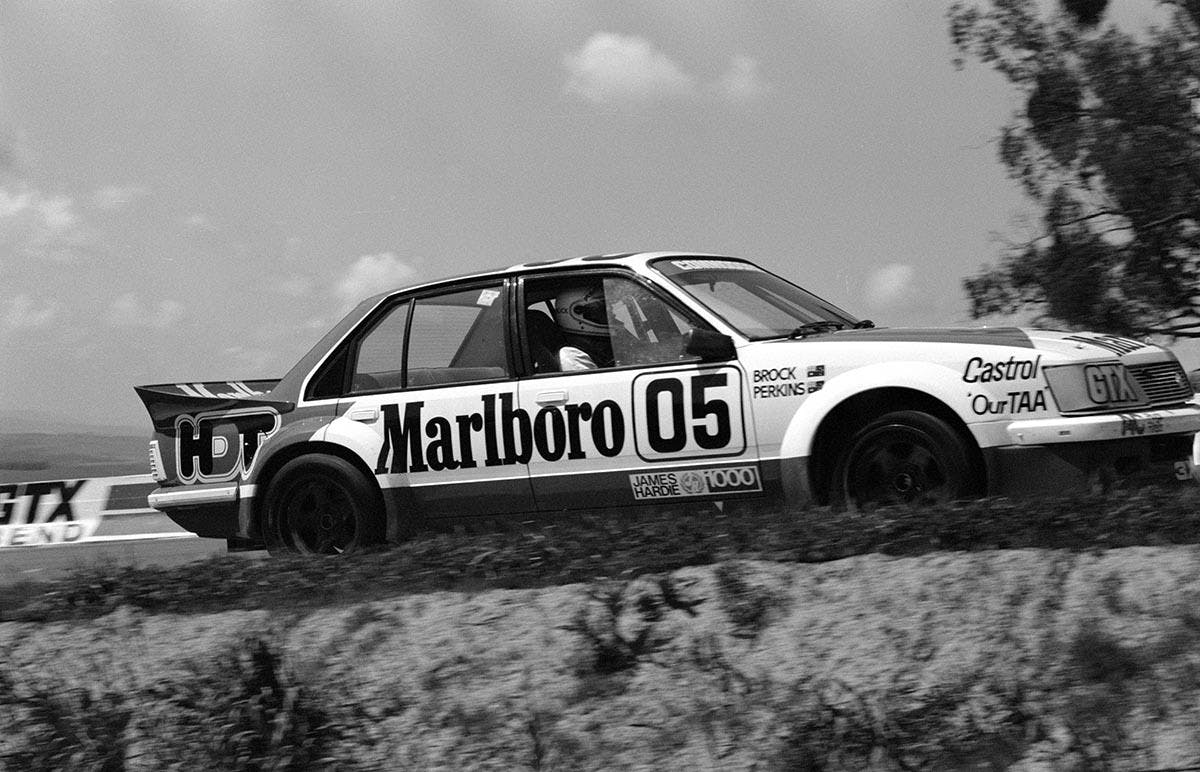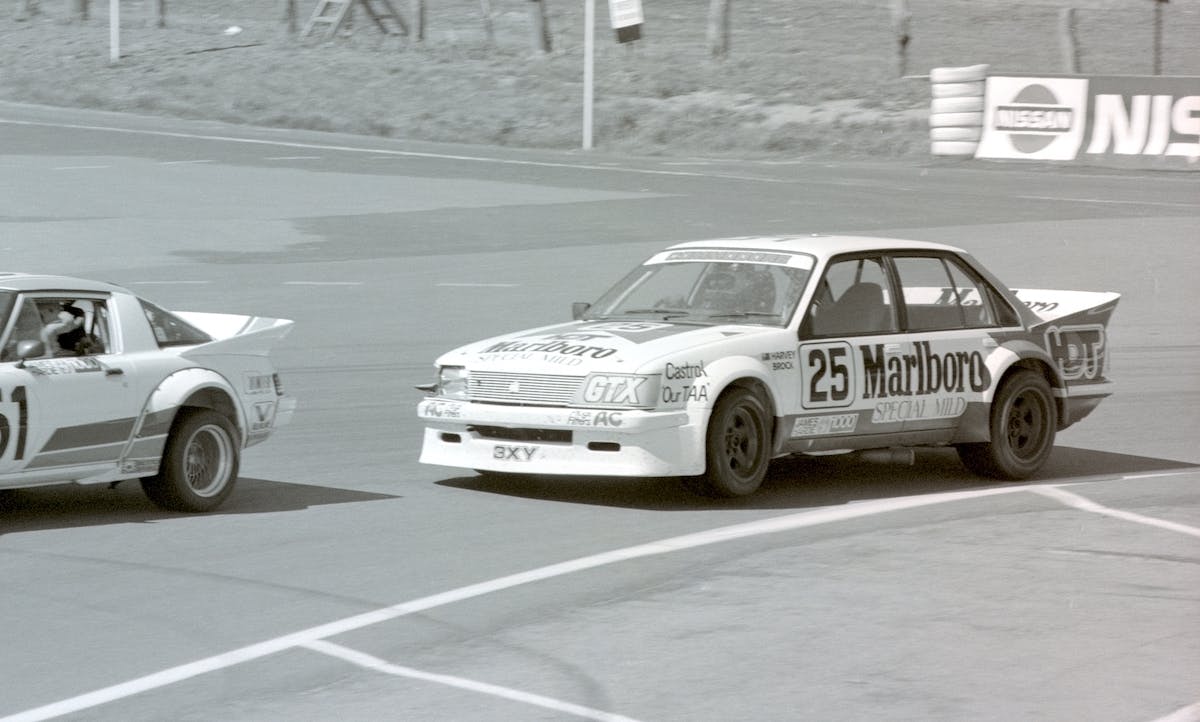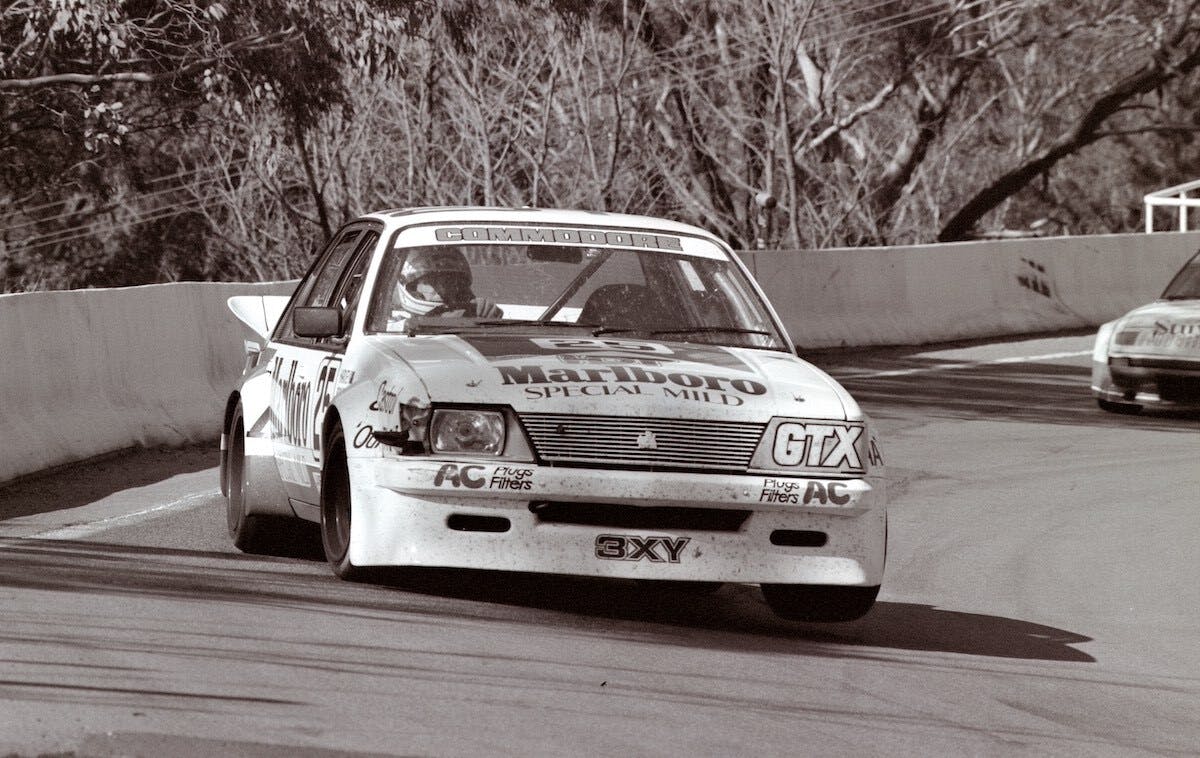Regulations allowing drivers to be entered in two cars introduced in 1977
Peter Brock won in team's second car in 1983
Peter's win cost brother Phil a probable Bathurst win
Few editions of the Great Race at Bathurst across the last 60 years have split opinion quite like the 1983 James Hardie 1000.
It was the first of two occasions in which Peter Brock won the race in his team’s second Commodore after his primary car failed early.
Such moves were legal under the ‘cross-entering’ rules of the day, but the 1983 saga did not pass the pub test with many casual fans and mainstream media.
The swap cost Brock’s brother Phil a probable Bathurst win and created angst inside the all-conquering HDT.
Regulations allowing drivers to be cross-entered in two cars had been introduced to the Great Race in 1977.
Bathurst organisers, the Australian Racing Drivers’ Club, had taken inspiration from that year’s Le Mans 24 Hours, in which Belgian legend Jacky Ickx swapped cars en route to victory.
The ARDC explained at the time its desire to avoid the scenario where a star driver was taken out of the race early, robbing fans of seeing them in action throughout the day.
“The rule exists purely to be fair to the public,” argued event chief Ivan Stibbard in the official program for the 1977 Bathurst 1000.
Brock was not the first star driver to take advantage of the rule.

In 1980 Ford hero Allan Moffat switched from his own failed car into Bob Morris’ Falcon that he was cross-entered into, before that too was retired.
Brock himself moved from #05 to the sister #25 entry during the 1983 Sandown 400, but the HDT had not lodged the correct paperwork and he was excluded from a third-place finish.
The Holden team, which at the time was owned by Brock and managed by Larry Perkins, did not make the same mistake at Bathurst.
The 1983 Great Race started with Brock and Perkins set to share the #05 Commodore, and loyal HDT lieutenant John Harvey paired with Peter’s brother Phil ‘Split Pin’ Brock in car #25.
Brock retired #05 with engine failure just eight laps into the 163-lap contest, and Harvey was pulled out of second place on lap 20 so that Brock could jump aboard the #25 machine.
Brock and Perkins completed the rest of the race in #25 and took a comfortable one-lap victory over Allan Moffat’s Mazda RX-7, which had been out-gunned by the big Commodore on the Mountain.
The trio of Brock, Perkins and Harvey were credited with victory, the first three-driver crew to win the Great Race, while ‘Split Pin’ missed out on both a stint in the car and a place in history.
Although all toed the party line at the time, the scenario left Harvey privately seething and was also said to have caused friction among the Brocks.
Phil suffered a nasty accident aboard a HDT road car just weeks after the Great Race and was subsequently sacked by the team.

Speaking after the race, Peter’s explanation of why his brother did not get to drive in the race had been simple.
“When we took over the lead in the second car, we had the rhythm of the race,” he said, having remained in the car during its final pitstop.
“I knew what the car was doing, how the track was, and I felt that I had put the pressure on Moffat. To put Phil in under those circumstances was an unnecessary risk.”
Reflecting on the situation with Australian Muscle Car Magazine in 2007, Phil Brock said that missing out on the victory was a source of frustration, but squarely blamed team manager Perkins.
“Bathurst ’83 was a stupid bloody thing, where one person’s ego got totally out of control, which is why I never got a drive,” he said, referring to Perkins.
“I was a bit (upset) at the time that (Peter) didn’t do something about it, but during the race his job was to drive the car to the best of his ability.”
However, Perkins recalled to the same publication in 2013 that the very scenario of needing to take over the #25 car had been set out in a team briefing the night before the event.
Perkins told AMC’s Luke West that the team was not permitted to put Phil Brock or Harvey in the car once the first swap took place.
“(The rule stated) two drivers could take over the car of teammates subject to those drivers being entered in it, which we were,” Perkins said.

“But once John Harvey handed the car over to Peter, it was Peter’s and my car.
“Even with the best intentions, the original drivers could no longer drive that car as, under the rules, it was Peter’s and my car.
“It wasn’t a case of ‘Okay, let’s give Phil Brock a drive now’ – it wasn’t as simple as that.”
Perkins later campaigned against the ability to cross-enter, as it benefitted the bigger teams with the resources to field multiple cars.
Brock famously won again after a car-swap in 1987, a year in which Perkins’ single-car privateer entry crashed out on just the third lap of the race.
It was another five years before the ability for drivers to switch cars during the race was outlawed.
A footnote to the 1983 controversy was that the Commodore fielded as #25 had been driven by Brock and Perkins to victory as #05 the previous year.
That made it the first single machine to win the race twice – a feat only subsequently achieved by a Holden Racing Team Commodore in 2001/02 and a Triple Eight Commodore in 2020/22.